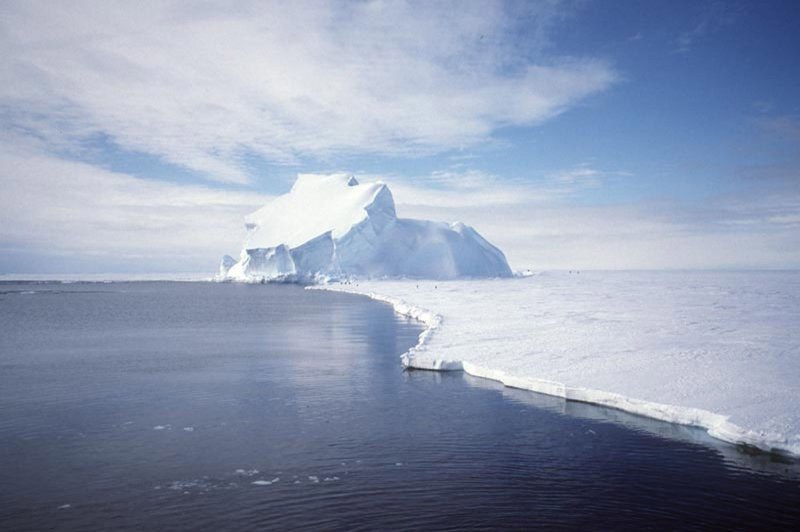Ice shelves in Antarctica are likely to double their surface melting rate by 2050. Photo by Ben Holt Sr./NASA |
License Photo
WOODS HOLE, Mass., Oct. 12 (UPI) -- In a new study on the future of sea level rise, researchers looked specifically at the mechanisms that control surface melting on Antarctica's ice shelves.
Their analysis suggests ice shelves will double their melting rate by 2050. By 2100, surface melting may precipitate ice shelf collapse, leading to a dramatic rise in sea level.
Ice shelves are the floating extensions of interior ice sheets. The coastal shelves act as a protective wall, insulating continental ice sheets from ocean currents.
The direct contribution of melting ice shelves to sea level rise is minimal, but their presence slows the rate of meltwater entering the ocean. As ice shelves deteriorate, melting from ice sheets accelerates, leading to sea level rise.
Researchers at the Woods Hole Oceanographic Institute used satellite observations to study melting rates along Antarctica's coastal ice shelves. They then combined their data with climate model simulations based on varying levels of greenhouse gas emissions.
Under both high and intermediate emissions rates, their models suggest a doubling of surface melting by 2050. Under high emissions scenarios, surface melting increases to levels associated with ice shelf collapse by 2100.
While a moderate reduction in the current rate of greenhouse gas emissions may not prevent the doubling of surface melting rates, it would prevent the most catastrophic scenarios.
The researchers shared their results in a paper published online this week in the journal Nature Geoscience.
"Our results illustrate just how rapidly melting in Antarctica can intensify in a warming climate," lead study author Luke Trusel, postdoctoral scholar at Woods Hole, said in a press release. "This has already occurred in places like the Antarctic Peninsula where we've observed warming and abrupt ice shelf collapses in the last few decades."
"Our model projections show that similar levels of melt may occur across coastal Antarctica near the end of this century, raising concerns about future ice shelf stability," Trusel said.















